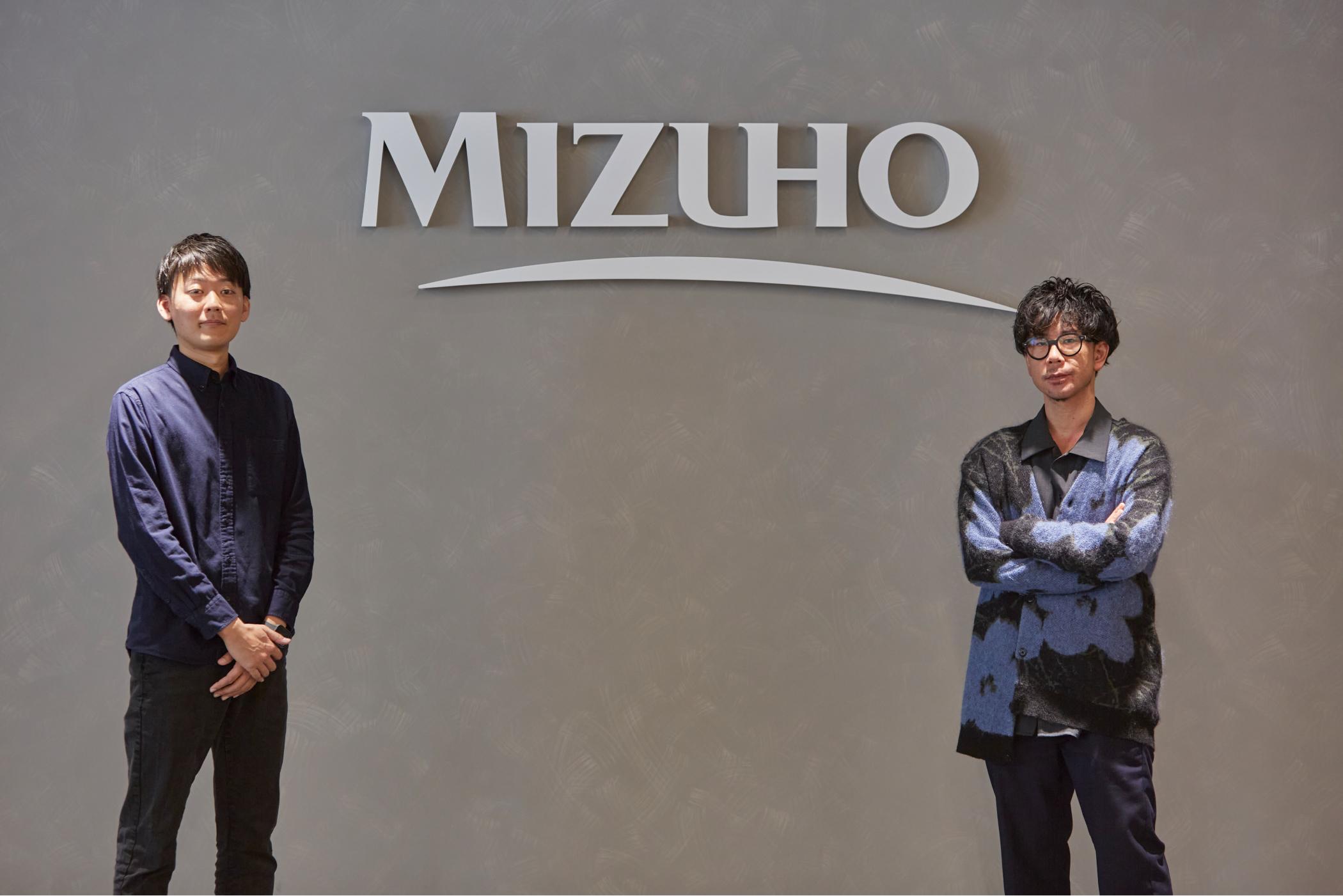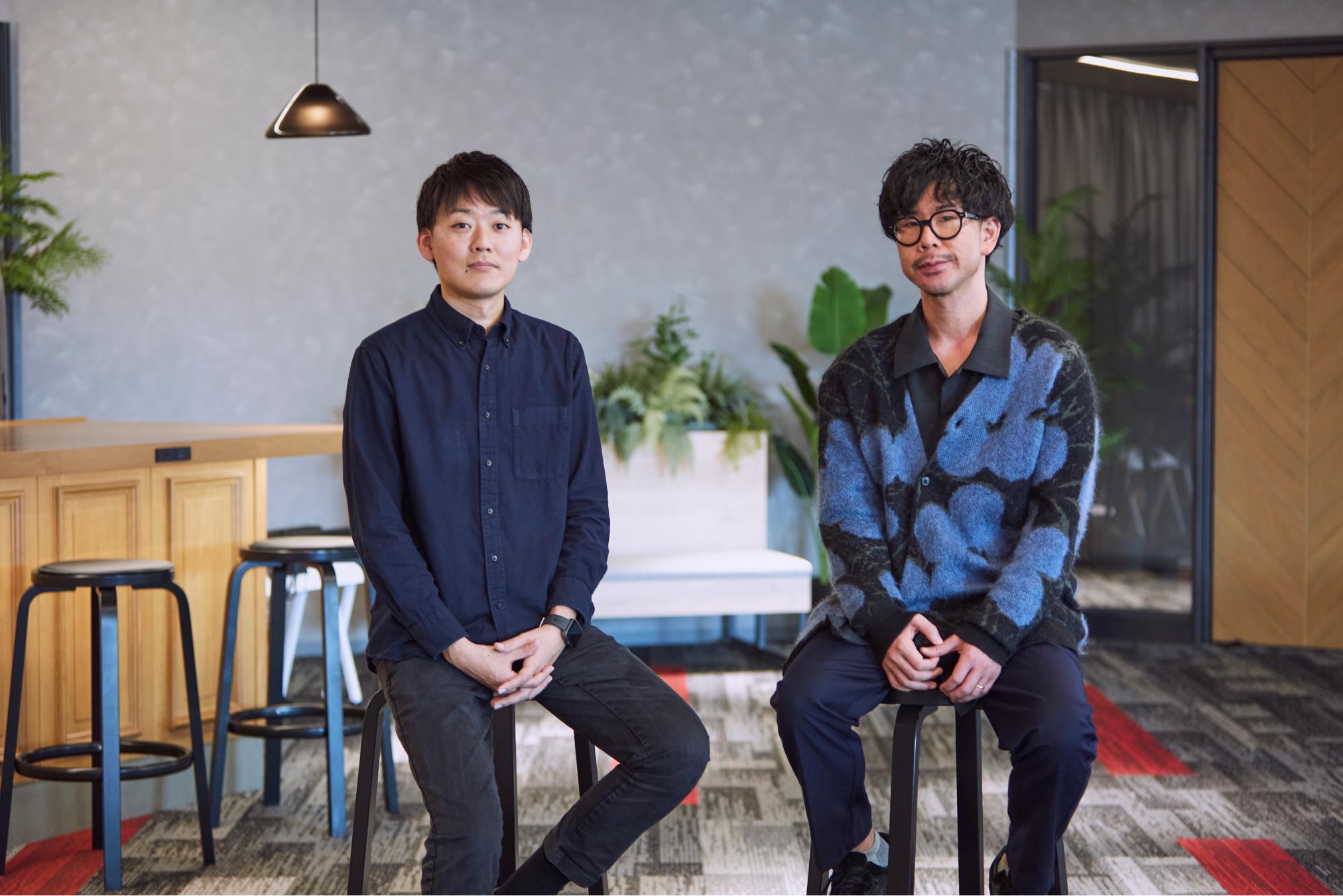Use it and your world will change. Improving product quality by streamlining communication.

There is a limit to text-based development. Passing stringent security requirements to introduce Figma
Mizuho Bank is a commercial bank that is a subsidiary of Mizuho Financial Group (MHFG). With bases in 47 prefectures in Japan and approximately 120 locations across 40 countries and regions overseas, it is firmly established both in Japan and abroad.
Mizuho Bank introduced Figma full-scale in its Digital Marketing Department in 2021. They used Figma to completely redesign the Mizuho Direct tablet application in-house, and as a tool to communicate with related departments and development vendors. The improvement in the app was dramatic, with its App Store rating increasing from 1.5 to 4.5 stars after the redesign.
We asked Mr. Masayuki Satake, the design lead on the Digital Marketing Department’s Marketing Platform Team, about what the design and development process used to be like before Figma was introduced.
Masayuki: “We used to outsource design and development to partner companies. Since things like requirement definitions and screen specifications were text-based, we sometimes felt that the completed design was not what we had envisaged. In addition, since only the formally approved and final versions of documents were exchanged, a lot of time was spent sending documents back and forth. We were working within a set development period, so there was a limit to how many times a design could be sent back and forth. In some cases, the released design was not 100% satisfactory.”

Until now, banks mainly recruited generalists, and they would normally train staff in the necessary expertise whenever they were assigned to a new department. However, as the digital domain becomes the main battlefield, and the expertise required for various jobs has become more granular, the decision was made to recruit for specialized jobs. One of these is the designer, and as the importance of design in each product has come to be recognized within the company, especially in digital products, the bank decided that it was time to introduce Figma.
Masayuki: “Prior to its introduction at Mizuho, I had used Figma when I had temporary access to the design environment of an external design firm. Figma was already a common language for designers at that time, so I felt that it wasn’t something to be used only in special circumstances; rather, it was meant as a go-to tool to be used on a routine basis.”
But there were significant obstacles to its introduction. In order for a new SaaS to be used in the banking industry, it has to meet stringent security requirements, including over one thousand security check items.
Masayuki: “We started with the business plan, so we basically had to investigate and resolve any questions we had by ourselves. At that time, Figma did not have a Japanese subsidiary, so we sometimes had to make inquiries to the United States. It was pretty arduous work. After successfully completing the security checks in about four months, we started using Figma in November 2021.”

Fig Jam helps expand and materialize ideas while having a positive impact on team motivation
Mr. Akinori Nagai, Senior Designer (UX) on the Digital Marketing Department’s Marketing Platform Team, shared his thoughts on the benefits of Figma in design communication.
Akinori: “As a UX designer, my job is to put together the optimal design, while giving balanced attention to the pre-design customer experience, system feasibility, and business requirements. For me, FigJam is one of the most useful features of Figma. I hold discussions about design and design trends about twice a week with the designers in my department, and I use FigJam like a whiteboard. The advantage is that it's just as easy to operate as PowerPoint and you can intuitively organize your thoughts. There are projects that may not have been born without these discussions; they are very helpful in expanding and summarizing ideas.”

Masayuki: “I agree on that point. In the past, interactions were text-based, so we tended to expect conclusions and logic in everything, but we are now able to have good visual-based brainstorming. We are able to bring together ideas that are still vague and make them concrete, and as a result projects get set up much faster.”
Akinori: “When things used to get decided at meetings, the facilitators had to prepare quite a lot. The work of gathering and summarizing opinions, which used to be the job of the team leaders, is now a collaborative effort, so there is less strain on the leaders.”
Masayuki: “At meetings, there tends to be a split between those who speak up and those who don't. I think the fact that we were able to convert that into a culture that welcomes impromptu comments also affects the motivation of our members. Recently, some project management members have obtained certification as HCD-Net Human-Centric Design Specialists, and I feel that design awareness is increasing across the department.”
Akinori: “FigJam is also a surprisingly useful tool for managing tasks. I like that there aren't many options, which makes it simple to use. It works well with remote work, so it fits well with the diversification of working styles since the COVID-19 pandemic.”
Streamlining communication and deepening essential discussions
Masayuki says that Figma is now more important as a communication tool than as a design tool. We asked him what specific benefits he has experienced.
Masayuki: “The frequency of interaction during projects has increased significantly. I feel that the design process has been streamlined because an interaction that used to take days when we were sending emails back and forth can now move forward in a short meeting. It allows us to combine multiple essential discussions within a limited amount of time, leading to a higher quality product.
We also have tighter communication among our team members. If you share your ideas verbally, when that idea is turned into a visual design, the idea and the design can gradually start to diverge. It's great to be able to discuss and modify the design while looking at it together. I like the function where you can comment with a forward slash, because it feels like I'm conversing right there on the spot.”
Akinori: “That’s true. It's good to be able to make casual comments. There is no need to open with a formal greeting, so I feel like I can talk more quickly and directly than on other chat platforms. I also like the timer function that plays music. I love being able to co-edit in real time, communicate easily, and use it conveniently with ease.”
Masayuki: “Some of the people who are currently using Figma belong to the different departments responsible for specific services, and I feel that they can be onboarded with minimal support, even if they are not familiar with design tools.
Another major benefit is that version management is easier. With Figma, you can keep different versions of a design lined up in horizontal or vertical frames, so you can keep track of changes. When the thinking process gets drawn out and you start going around in circles, you can easily backtrack and check how you reached that point, so I feel that the version management costs have decreased significantly.”
Akinori: “Indeed, this is something unique to Figma that makes it easy to expand on ideas. On the other hand, it is also true that it can become cluttered if you are endlessly adding new ideas. It's important to always have both a succinct and expansive perspective, so that you can fit the message in one slide when needed.”
Expanding design horizons by rolling out Figma to other departments
These two men are cultivating a new design culture at Mizuho Bank. We asked them about their outlook for the future.
Akinori: “I would like to roll out Figma across various projects within the company. Designers have already been assigned to several projects for new services and redesigns. We want to further increase the number of designers in the future and expand within the bank.”
Masayuki: “If you're not a designer, it may not be obvious to you how good Figma is. But use it and your world will change. There were some hurdles to its introduction, but it has turned out to be an essential tool for the coming times.After the redesign of Mizuho Direct, many people are saying that it is much easier to use, and I think that the importance of design will be recognized more and more. In the future, I hope that the design system will be applied across a wide range of our products and that we can foster a culture in which it is used in all departments.”
The Total Economic Impact of Figma
This report, published by Forrester, provides an example of the use of Figma in streamlining workflows, integrating design stacks, and developing better products.
Enhancing design with Figma
Great design is critical to differentiating your product or brand. But nothing great is made alone. Figma provides a fast, comprehensive design workflow for the entire product team.
Talk to us about enhancing your design with Figma.
Key Features of Figma:
- Integrates all steps in the design process, from idea generation to production and design building, in one place
- A company-wide design system that accelerates design workflows
- A web-based, high accessibility, high usability product suite that promotes diversity in the product team's processes




